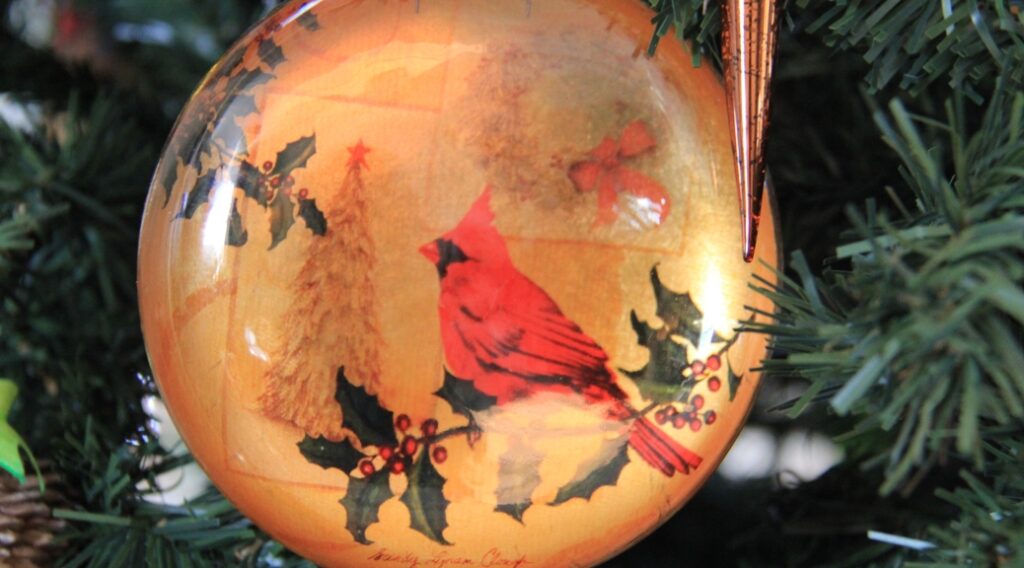
As the snow falls and cold winds blow, we Canadians move indoors and dream of next year’s garden (has your first seed catalogue arrived yet?). In the spirit of the coming festive events, here are 12 favourite Christmas plants – some decorative, some food, and some traditional!
Favourite Christmas Plants – DECORATIVE
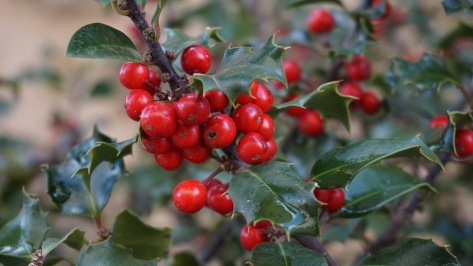
12. Holly
Decorative green plants like holly, ivy, and mistletoe originate in pre-Christian times and were associated with celebrating the Winter Solstice by warding off evil spirits and celebrating new growth (well the latter only in a warmer climate). Many countries (especially the UK and Germany) still decorate their homes with these plants today, often in Christmas arrangements or wreaths. The beautiful berries of the Christmas holly are produced by some of the approximately 400 species of holly (Ilex) that growing wild around the world. Typically, holly trees and shrubs are smooth-barked and have small flowers, fleshy red or blackberries, and leathery, shiny leaves.
In pagan times, Holly was thought to be a male plant and Ivy a female plant. An old tradition from the Midlands of England says that whatever one was brought into the house first over winter, tells you whether the man or woman of the house would rule that year! But it was unlucky to bring either into a house before Christmas Eve. For the Christian faith, the prickly leaves symbolize the crown of thorns that Jesus wore when he was crucified. The berries are the drops of blood that were shed by Jesus because of the thorns.
If you are interested in five fascinating facts about holly, check out this link.
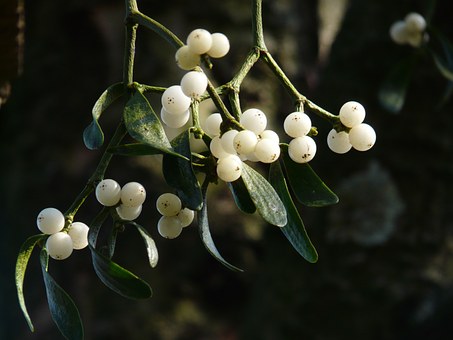
11. Mistletoe
Mistletoe has long been a symbol of love, peace, and goodwill. The custom of using mistletoe to decorate houses at Christmas is also pre-Christian and the habit of kissing under the mistletoe continues today in many countries. Mistletoe is the common name for obligate hemiparasitic plants in several families in the order Santalales. The plants in question grow attached to and within the branches of a tree or shrub. In the past, mistletoe was often considered a pest that kills trees and devalues natural habitats but has recently been recognized as an ecological keystone species. Studies have shown that rather than being a pest, mistletoe can have a positive effect on biodiversity, providing high-quality food and habitat for a broad range of animals in forests and woodlands worldwide.
For a whole host of information on mistletoe myth and legend, plus practical details of how to grow it in your own garden, Jonathan Briggs’ Mistletoe Pages.
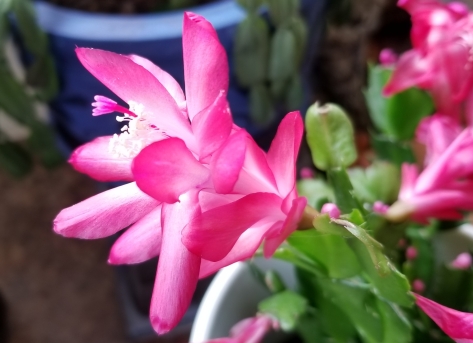
10. Christmas Cactus
The Christmas cactus (Schlumbergera xbuckleyi) is popular for its colourful flowers that appear during the Christmas season. It is native to the coastal mountains of south-east Brazil where it is found growing on trees and rocks.
However, if you have picked up a “Christmas cactus” in the past month or so that is now blooming beautifully it probably is a Thanksgiving cactus (Schlumbergera truncate), which usually blooms about a month before Christmas cacti and has very cool flowers– I have heard them described as “leaping shrimps” or “lobster claws”. You can read more about the varieties, and how to tell them apart (hint it’s all in the leaf segments) here.
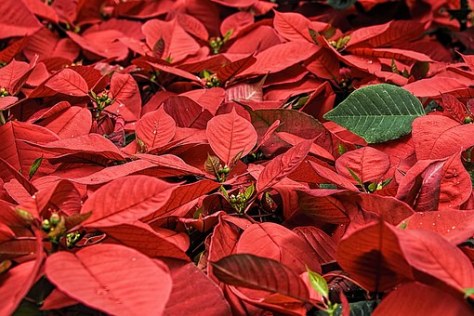
9. Poinsettia
Euphorbia pulcherrima is is a shrub native to Mexico where it is known as “Noche Buena”, meaning Christmas Eve. The Aztecs called it cuetlaxochitl (brilliant flower), and made a purple dye from its bracts and a fever medicine from its sap.
The plant’s association with Christmas began in Mexico 400 years ago. According to legend, a young girl who was too poor to provide a Christmas gift for the birth of Jesus was inspired by an angel to gather weeds from the roadside and place them at the church altar. Crimson “blossoms” appeared from the weeds and became beautiful poinsettias.
The poinsettia plant was named after Joel Robert Poinsett, who was an American ambassador to Mexico around 1829. Poinsett was an amateur botanist and liked the plant so much that he sent several back to his home in South Carolina where he grew them in his greenhouse and introduced them in the US.
Poinsettias are popular Christmas decorations in North America and Europe, and the colours have expanded far beyond the traditional red to all shades of pink, salmon, apricot, yellow, cream, and white. While lovely at Christmas they are tough to keep as a houseplant given our dry indoor conditions. During the 1960s, plant breeders worked hard to make the poinsettia more colourful, compact and floriferous, which is what you see today. More information here.
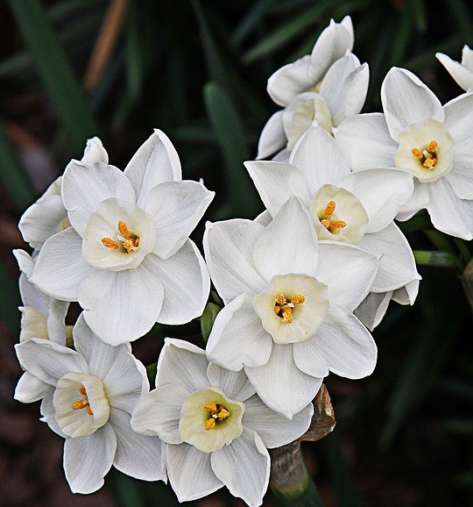
8. Paperwhites
Tazetta daffodil types – usually the paperwhite narcissus N. ‘Ziva’ – is specially prepared to flower in time for December 25. Cultivars of N. tazetta include ‘Paperwhite’, ‘Grand Soleil d’Or’ and ‘Ziva’, which are popularly used for forcing indoors.
If you want to try them out and have flowers all winter, here’s how to sprout paperwhites in your home. (One word of warning: not everyone loves the perfume of paperwhites. One component of the paperwhites’ unmistakable scent is indole, and some people’s noses find this adds a fetid edge that’s really rather unpleasant. So you may want to sniff before you try.)
Paperwhites may grow tall and leggy, flopping over just as they begin to bloom. Tie a ribbon around the stems, about two thirds of the way up. According to a professor at Cornell University if you grow paperwhites in a 4 to 5% solution of alcohol it helps regulate the growth. Given that most liquors are 40% alcohol, this would be 1 part alcohol to 9 parts water. Don’t use beer or wine (just hard liquor – gin/vodka/whiskey/rum/tequila).
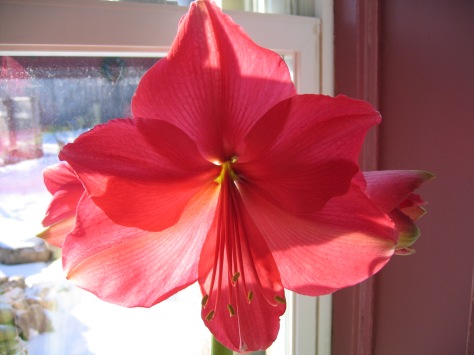
7. Amaryllis
Everyone I know loves the amaryllis, and we closely associate them with the festive season. While the popular name is “amaryllis”, hippeastrum is generally accepted as being the correct name. It usually blooms around Christmas or into January or February in the Northern Hemisphere, then produces long green leaves that allow it to store energy for the following year.
Native to Peru and South Africa, amaryllis comes from the Greek word amarysso, which means “to sparkle.” Bulbs were brought to Europe in the 1700s and have been known to bloom for up to 75 years. Amaryllis flowers range from 4 to 10 inches in size and can be either single or double in form. While the most popular colours are red and white, flowers may also be pink, salmon, apricot, rose or deep burgundy. Some varieties are bicolour such as purple and green, or picotee (having petals with a different edge colour). Lots of information here.
You can buy bulbs on their own or potted up. Select the largest bulbs available as they will produce more stalks and blooms in the first year. Bulbs should be firm and dry with no signs of mold, decay or injury. It is common to see new growth (leaves, buds) emerging from bare or planted bulbs. Want to get your amaryllis to rebloom? Here’s some great advice.
Favourite Christmas Plants – FOOD

6. Cranberry
The cranberry (Vaccinium spp.) has been a festive favourite for hundreds of years, ever since Native Americans mashed up the fruit and mixed it with dried deer meat and fat to make pemmican (a concentrated mixture of fat and protein used as a nutritious food). In 1816, Dutch and German settlers in the New World planted the first ever “crane berry” crop (so-called for their blossom’s resemblance to the head and bill of a crane) on Cape Cod, using the fruit as a natural dye for rugs, blankets, and clothing.
It was probably inevitable that the cranberry became linked with Christmas. With their bright red colour, they reflect the season perfectly. As early as the 1840s, people were stringing them with popcorn to make festive garlands for the Christmas tree. At the same time, with their winter availability and the fact they were slow to spoil, cranberries represented one of the few fruits that could be served fresh during the holidays. To settlers’ delight, it was discovered very early that the tartness of cranberry sauce helps cut the fat and richness of such traditional holiday fare as pork, goose, duck, and turkey, making it a perfect complement to festive dishes. Check out lots of lovely ways to use cranberries here.

5. Sage
Not only is sage a vital ingredient of the Christmas classic, sage and onion stuffing, its fragrant, evergreen leaves are also a wonderful addition to a homemade Christmas wreath, a table centrepiece with candles, or simply stuck in a vase with some silvery eucalyptus leaves, bay branches and rosemary. Sage is reputed to have health-giving properties – it is said to be an excellent anti-inflammatory and helpful in reducing irritations of the stomach and intestines. Sage is also thought to be a great memory booster and is one of the most effective treatments for a sore throat. There is an Arab proverb that says “How can a man die who has sage in his garden?” If you are interested in its medicinal properties, this Herbal Academy site has some fascinating background.
In your garden, sage likes full sun and well-drained soil. Be sure to prune it right back every spring to stimulate new growth. It doesn’t have to go into a dedicated herb bed—plant it under roses and with lavender.

4. Rosemary
Its scientific name is very charming – rosmarinus, which is from “dew” (ros) and “sea” (marinus) or “dew of the sea.” Rosemary is native to the rocky hills on the shores of the Mediterranean and loves a humid sea breeze. The ancients believed without a doubt that the sea air gave the tree its distinctive scent.
Rosemary was connected with the Virgin Mary (because it was thought to be Mary’s favourite plant). People thought it could protect them from evil spirits. It is also considered a plant that symbolizes love, loyalty, and friendship. When rich people ate the main Christmas meal in the Middle Ages, it was commonly boar’s head garnished with rosemary.
Rosemary is also more commonly known as the remembrance herb, so it is therefore used at Christmas to remember the birth of Jesus.
The English poet, Robert Herrick, who lived between 1591 and 1674 celebrated the holiday use of rosemary in this verse: “Down with the rosemary and so, Down with the baies and mistletoe, Down with the holly, ivie all Wherewith ye deck the Christmas hall.”
Many people use (or give) a small, potted rosemary bush for a lovely little Christmas tree or fragrant centrepiece. If you need some tips on how to keep this humidity-loving plant alive after Christmas, check out this blog.
Favourite Christmas Plants – TRADITIONAL
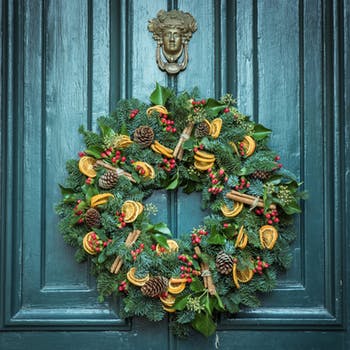
3. Christmas Wreaths
People began hanging a circular wreath of evergreens during mid-winter back in Roman times. These wreaths were signs of victory and status. Rich Roman women even wore them as headdresses at special occasions (like weddings). The word ‘wreath’ comes from the Old English word ‘writhen’ which means to writhe or twist. Christmas wreaths as we know them today might have started life as kissing boughs (a gesture of goodwill or to welcome guests) or come from the German and Eastern European custom of advent wreaths.
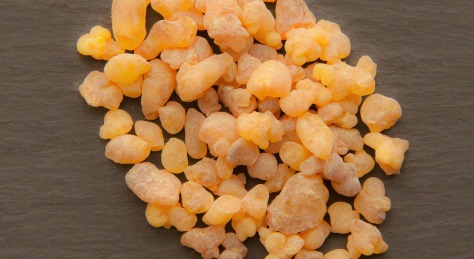
2. Frankincense
Frankincense derives from the tree Boswellia sacra. This tree grows in the Dhofar Fog Oasis, a remarkable area. Three coastal mountain ranges of Oman and Yemen are cloaked in thick fog during the summer months. This species was a source of great wealth in centuries past. Frankincense from this region (now Oman) provided much of the wealth through centuries of trade with Egypt, Jordan, and Syria. Caravan routes carried the precious resource across the Arabian peninsula.
The BBC posted an amazing story about uses for both frankincense and myrrh in the modern age. Both frankincense and myrrh were widely available and would have been considered practical gifts with many uses. The expensive resins were symbolic as well. Frankincense was often burned, symbolizing prayer rising to the heavens like smoke.
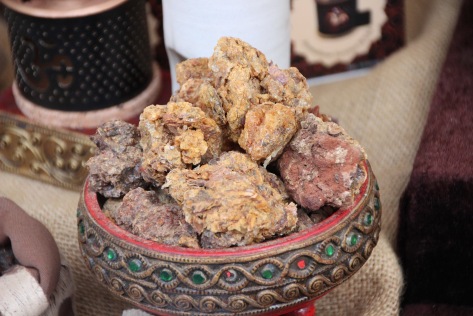
1. Myrrh
We derive Myrrh from the species Commiphora myrrha, a small tree with gummy pale yellow resin. By drying the liquid into reddish-brown walnut-sized lumps, we then distil an oil. Native to Somalia, Ethiopia, and Yemen, myrrh was very popular in the ancient world. It was used as a medicine by the Chinese and Egyptians and was important to sun-worshipping rituals and mummification. Since myrrh was often used in embalming, it tended to symbolize death.
If you are interested in more information about the botanical connections to the Christmas season, this Botany of Christmas article has lots of links.
Well, there you have it. Some fun and interesting gardening connections to the Christmas season.

Originally published December 2018. Republished with permission of Emma Murphy, Peterborough Master Gardeners.


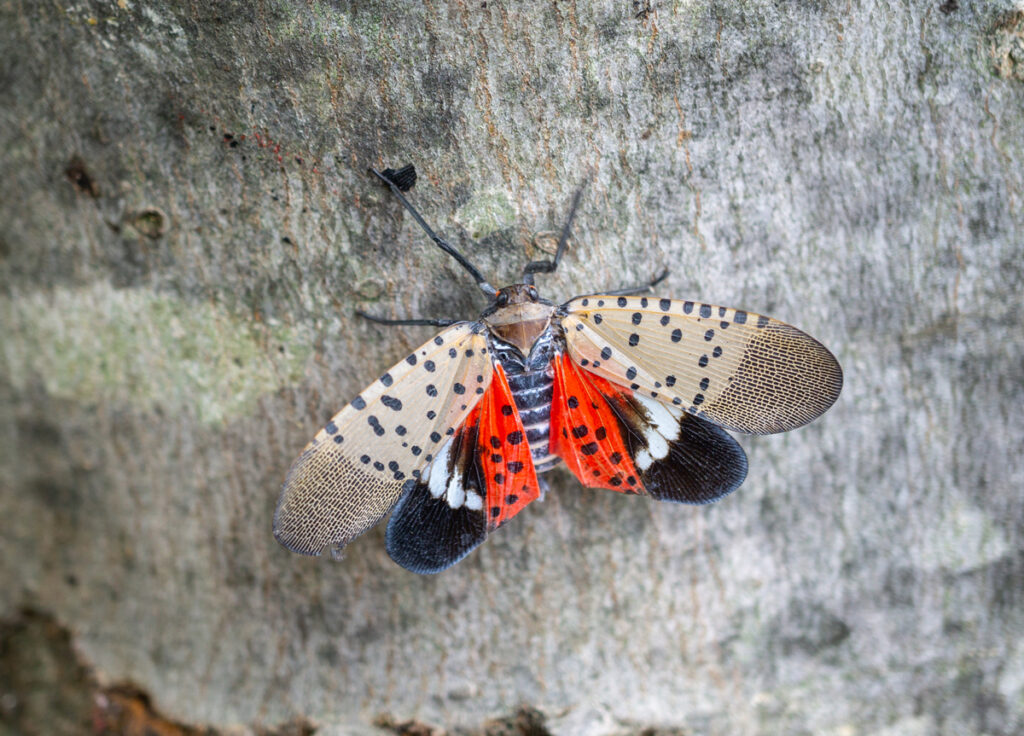
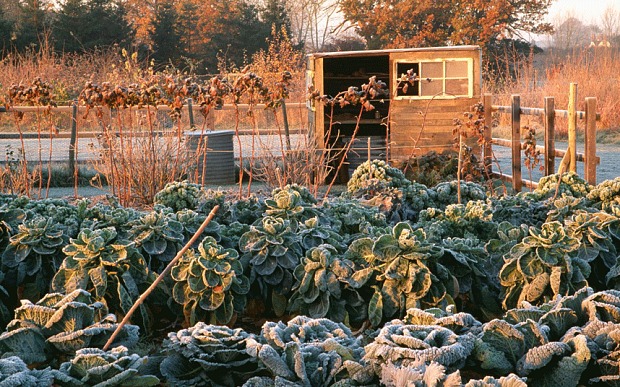

About The Author: Emma Murphy
Emma Murphy is a Master Gardener with the Peterborough and Area Master Gardeners. Raised in London but now based in Lakefield, Ontario, she loves to share her gardening knowledge with others. Her areas of expertise include perennials, shrubs, and trees, and she's working to incorporate more native plants in her wild, country-style garden.
More posts by Emma Murphy